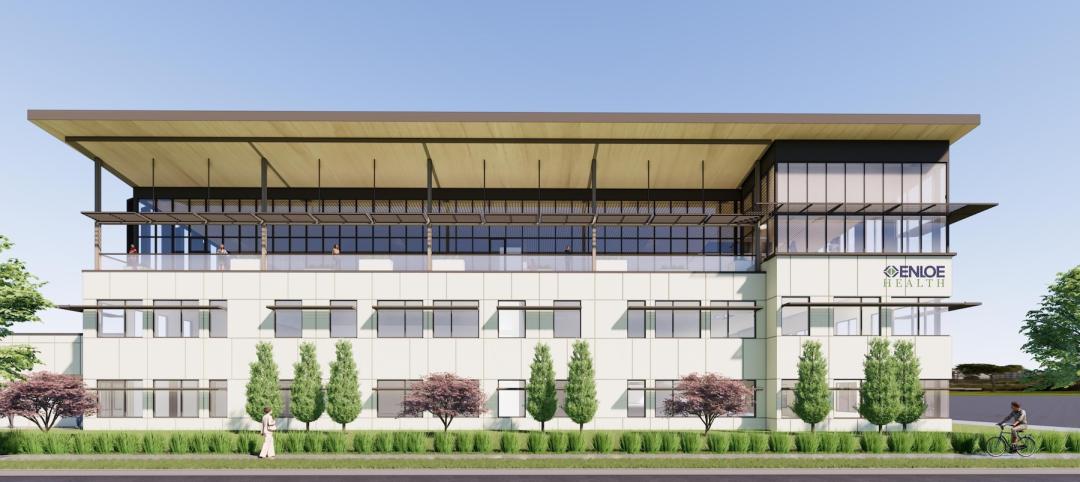A lot can happen and change in five years, and a lot has in healthcare. But to some degree many things have stayed the same due to resistance, being ignored, or just slow to change.
It has been five years since the Patient Protection and Affordable Care Act (PPACA, or ACA for short) was signed into law in March of 2010. Since that time, we have seen a continued shift to outpatient care, high utilization of hospital-based and free-standing emergency departments, the evolution of public and private insurance exchanges, the beginnings of defining quality and service metrics, and a slow migration from volume-based “first curve” world toward a value-based “second curve” industry.
The smart money is on shifting toward lower-cost, high-value care wrapped by a population health management mentality. Even if the payer system never moves fully to value-based, the more efficient and efficacious health systems emerging from this migration will be well positioned to provide competitive, low cost care in a volume-based or value-based system.
WHAT DO THE STATISTICS SAY?
An intended outcome of the ACA and reform is to reduce overall inpatient activity by managing health, reducing average length of stay (ALOS), reducing readmissions, and generally moving toward a holistic approach of population health rather than an acute, episodic approach.
Many are still skeptical that change is possible and that the government-sponsored system will fail. But data from the American Hospital Association (AHA) shows some interesting trends. From 2010–2012 (2012 is the latest data available at a national level), overall patient days and patient days per 1,000 population have declined. The number of inpatient beds has stabilized and decreased slightly, while emergency department visits and hospital-based outpatient visits continue to increase.
For years, pundits have postulated that with population increase and the aging Baby Boomer impact, inpatient utilization would increase. But what has happened overall, and in most markets, is the opposite. Inpatient days are declining.
In a Midwest market where CBRE Healthcare is currently working, Truven Health Analytics is projecting an overall inpatient use rate decline over the next five years. In many markets, providers are turning to Milliman models (Truven and Milliman provide data and consultative services to the healthcare industry related to retrospective and prospective healthcare utilization), projecting the impact of managed markets.
Clinical integration continues to increase with more than 60% of community hospitals (non-government facilities) affiliated in some manner with larger integrated delivery systems. Providers are realizing that there is value in integration, including payer leverage, rational distribution of services, access to clinical protocols, access to capital, sharing of clinical information, geographic diversity to better manage population health, and cost distribution to lower the overall cost of care.
Many systems that took part in the Accountable Care Organization pioneer projects have since left them, yet they still continue to develop their own efficient networks of care, partner with providers and payers, partner with community entities, and develop robust primary care networks through either traditional means or the establishment of primary care medical homes.
Regardless of what the government is doing or not doing, the market has responded and is getting ready for a value-based world where the inpatient hospital is no longer the center of the healthcare universe. Will there still be a need for acute-care hospitals? I say, without a doubt, yes.
But our focus on the “hospital on the hill” as the sole location for all of our healthcare needs has changed, and will continue to evolve.
WHAT ARE HEALTHCARE ORGANIZATIONS DOING ABOUT IT?
A sound planning approach that is implementation oriented is required. Time and dollars are too important to leave to hope and chance. The decisions are multi-variate and require a focus on strategy, facilities, real estate, financials, and overall care model.
1. Market Analysis Scenario Planning
A rigorous market analysis focusing on inpatient use rates, market share, and length of stay is required. As inpatient discharge rates decrease, so will overall bed demand.
This is an intended consequence of the ACA and the move to a value-based world. The goal is to manage hospitals stays (and the high costs associated with these stays) by better managing health.
We are modeling bed demand with several healthcare providers. These models are based on use rates remaining static or dropping, certainly not increasing. In the same models, we are adjusting market share to account for these drops.
But there has to be a corresponding strategy to increase market share, whether it be physician recruitment and alignment or through increased partnerships with other regional hospitals and providers that are referral sources.
Hope is not a strategy, but planning on how to shore up declining inpatient volumes is. As lengths of stay change, efficiency in operations will also demand that ALOS stabilize. All of this points to a steady state or decline in inpatient bed need.
2. Plan for Right-Sizing Inpatient Care
Inpatient care is not going away. However, our nation’s hospitals continue to age and are rife with infrastructure, standard-of-care, and operational issues. In short, they are out of date with contemporary and efficient care delivery.
Investment in inpatient core assets has slowed, and providers struggle with spending dollars when there is no guarantee on return on investment. Having a long-view to provide more efficient “outpatient like” hospitals must be the focus. Downsizing is a reality and re-investing in new/renovated modern facilities is occurring.
3. Plan for Ambulatory Care Strategies
As care continues to shift to ambulatory environments in primary and specialty care, healthcare organizations are seeking strategies and tactics to increase their capture rate of this market. Healthcare systems are developing robust primary care strategies to “blanket” their service area and cover lives.
Providers are also continuing to move “pure” ambulatory functions out of the high-cost, difficult to access, core hospital campus into dedicated, patient and provider friendly ambulatory care centers (ACCs). These ACCs are either on or off the medical campus. If they are on-campus, they should be separate and distinct from the inpatient chassis.
Owners, planners, project managers, architects, and builders need to provide the same level of creativity in site, facilities, and operational planning for ambulatory care as they have done for inpatient care over the last two decades.
CONCLUSION
Ultimately, healthcare providers are seeking direction on how to plan for a value-based world while still very much operating in a volume-based market. Successful organizations will position themselves to cover more lives and establish long-lasting relationships with physicians and other providers while re-tooling their inpatient and outpatient portfolio of assets to meet the changing needs and evolving requirements of payers and consumers.
By improving efficiency and developing broader networks, providers will succeed in today’s market. Following this approach will enhance volume in the short-term while preparing for long-term value-based incentives.
About the Author: Curtis Skolnick is Managing Director with CBRE Healthcare, based in Richmond, Va.
Related Stories
Healthcare Facilities | Jul 16, 2024
Watch on-demand: Key Trends in the Healthcare Facilities Market for 2024-2025
Join the Building Design+Construction editorial team for this on-demand webinar on key trends, innovations, and opportunities in the $65 billion U.S. healthcare buildings market. A panel of healthcare design and construction experts present their latest projects, trends, innovations, opportunities, and data/research on key healthcare facilities sub-sectors. A 2024-2025 U.S. healthcare facilities market outlook is also presented.
Healthcare Facilities | Jul 11, 2024
New download: BD+C's 2024 Healthcare Annual Report
Welcome to Building Design+Construction’s 2024 Healthcare Annual Report. This free 66-page special report is our first-ever “state of the state” update on the $65 billion healthcare construction sector.
Healthcare Facilities | Jun 18, 2024
A healthcare simulation technology consultant can save time, money, and headaches
As the demand for skilled healthcare professionals continues to rise, healthcare simulation is playing an increasingly vital role in the skill development, compliance, and continuing education of the clinical workforce.
Mass Timber | Jun 17, 2024
British Columbia hospital features mass timber community hall
The Cowichan District Hospital Replacement Project in Duncan, British Columbia, features an expansive community hall featuring mass timber construction. The hall, designed to promote social interaction and connection to give patients, families, and staff a warm and welcoming environment, connects a Diagnostic and Treatment (“D&T”) Block and Inpatient Tower.
Healthcare Facilities | Jun 13, 2024
Top 10 trends in the hospital facilities market
BD+C evaluated more than a dozen of the nation's most prominent hospital construction projects to identify trends that are driving hospital design and construction in the $67 billion healthcare sector. Here’s what we found.
Healthcare Facilities | May 28, 2024
Healthcare design: How to improve the parking experience for patients and families
Parking is likely a patient’s—and their families—first and last touch with a healthcare facility. As such, the arrival and departure parking experience can have a profound impact on their experience with the healthcare facility, writes Beth Bryan, PE, PTOE, PTP, STP2, Principal, Project Manager, Walter P Moore.
MFPRO+ News | May 21, 2024
Baker Barrios Architects announces new leadership roles for multifamily, healthcare design
Baker Barrios Architects announced two new additions to its leadership: Chris Powers, RA, AIA, NCARB, EDAC, as Associate Principal and Director (Healthcare); and Mark Kluemper, AIA, NCARB, as Associate Principal and Technical Director (Multifamily).
Healthcare Facilities | May 21, 2024
A collaborative delivery contract adds a new wrinkle to construction management
The setup combines traditional pact structures with a different risk-sharing approach.
Healthcare Facilities | May 6, 2024
Hospital construction costs for 2024
Data from Gordian breaks down the average cost per square foot for a three-story hospital across 10 U.S. cities.
Sponsored | Healthcare Facilities | May 3, 2024
Advancing Healthcare: Medical Office Buildings at the Forefront of Access and Safety
This article explores the pivotal shift from traditional hospital settings to Medical Office Buildings (MOBs), focusing on how these facilities enhance patient access. Discover the key drivers of this transformation, including technological advancements, demographic trends, and a growing emphasis on integrated, patient-centered care. Learn how MOBs are not only adapting to modern healthcare demands but are also leveraging modern access control and safety innovations.

















